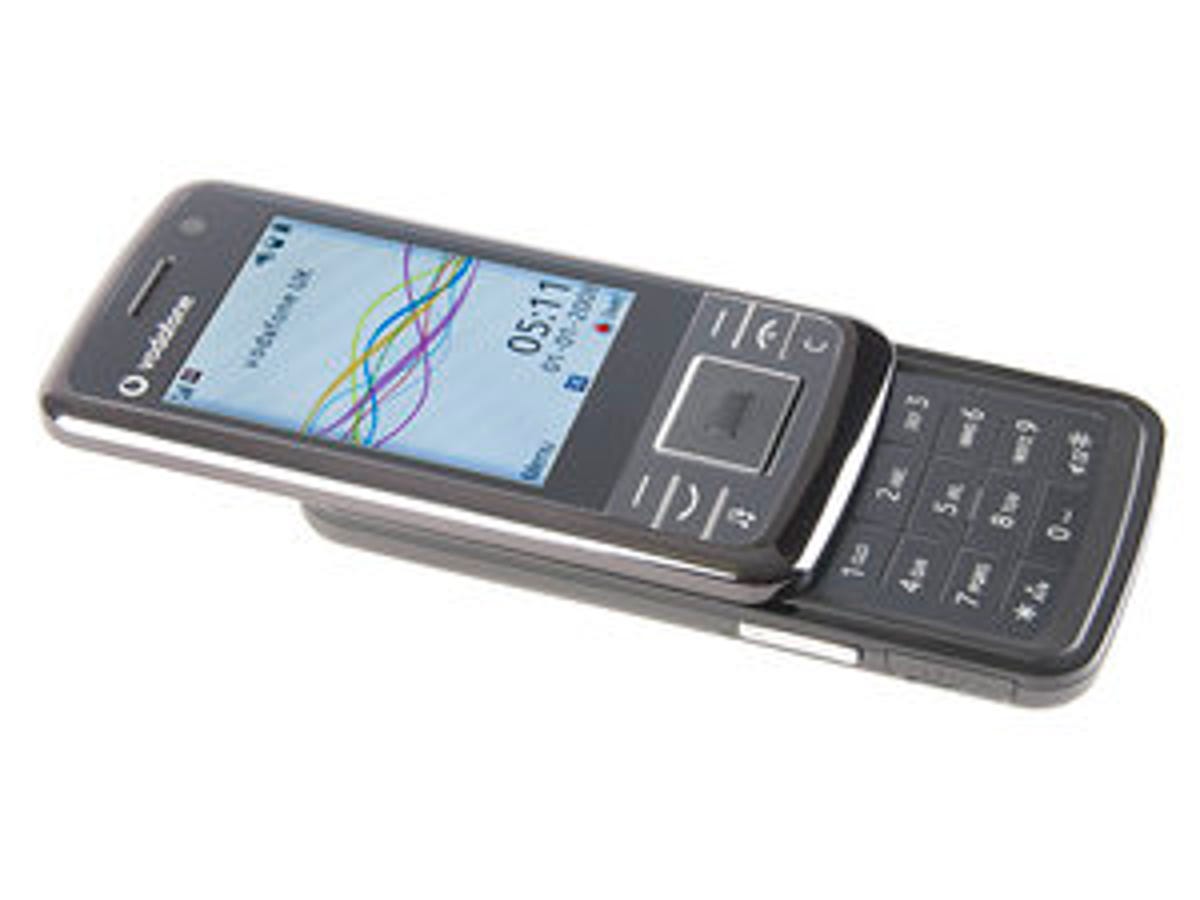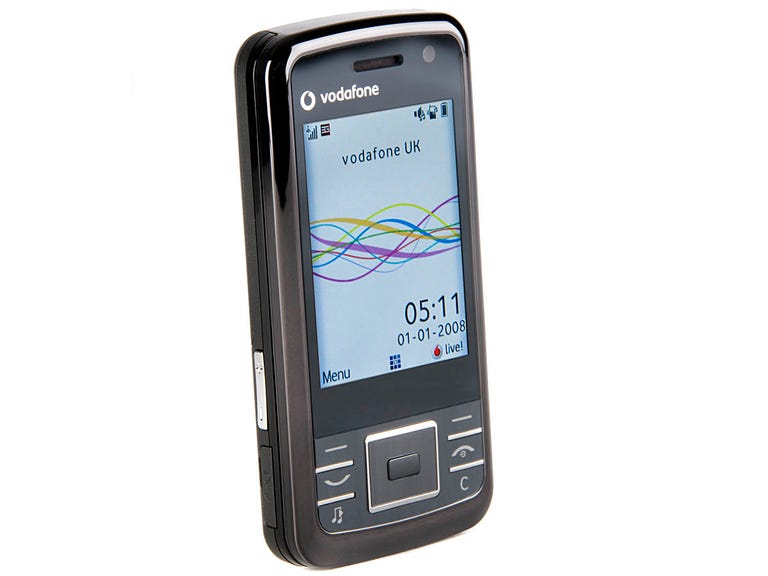 Why You Can Trust CNET
Why You Can Trust CNET Vodafone 830 review: Vodafone 830
The 830 slider phone quietly does the business, offering speedy HSDPA connectivity, a decent 3.2-megapixel camera and a handy MP3 player in a bargain package that feels flimsy but looks reasonably stylish. The straightforward user interface and syncing software also help make this a decent proposition
Own-brand handsets tend to be the black sheep of the mobile-phone world -- no-one wants to take the credit for producing them, while potential users might be put off by their mysterious parentage. The Vodafone 830 does have some quirks, but its combination of a good range of features and a low price tag could convince you to dip your toes into the own-brand waters.
The Good
The Bad
The Bottom Line
The 830 is free with Vodafone on a £15 monthly contract, and around £70 on a pay-as-you-go deal.
The light and the dark
The 830 is a bargain phone, and it feels like one. The plastic case feels flimsy, especially on the back, and the slider on our sample wobbled slightly when it was open. A
substantially sized handset, the 830 also has the unexpected lightness of a cheap DVD player, at only 90g. But, with sober dark-grey looks and a
pseudo-brushed-metal finish on the buttons, its appearance is nothing to be ashamed
of, and it wouldn't look out of place in the presence of Nokia
slider phones like the N81.

The 3.2-megapixel camera is covered when the phone is closed, which is good for protecting the lens, but it means that you have to take photos with the phone open. We found that takes some getting used to. Worse is that the volume button, which also zooms the camera, is opposite the shutter button, so we sometimes activated the zoom by accident with our thumb while gripping the phone to press the shutter.
The results from the camera are acceptable for quick
snapshots, with bright colours and good white balance. Typical hand-held shots
in indoor lighting are good enough for emailing or posting on Facebook.
But we found our photos tended to be blurry around the edges unless we
held the handset stock-still, and, without a flash or an LED photo light, our
snaps in low light were blurry and noisy. The 830 also takes video, but the resolution is so low that it's hardly worth it, unless you run into the Loch Ness Monster and you're desperate to record it.
Surfing safari
The 830's 61mm (2.4-inch) screen is bright and benefits from clear anti-aliased
text. Text looks especially good in the Web browser.
The 830 has HSDPA for faster surfing, and we found downloading to be snappy. The browser is functional but basic. For example, it can only zoom to a handful of preset levels, and you have to navigate through a couple of menu options to get them. We also occasionally found the browser unresponsive while a page was loading, even when we tried to stop the process.
Smooth use
The browser, and the rest of the user interface, will be familiar if you're
moving from a Sony Ericsson or Samsung phone, with the 830's menus and predictive text similar to the offerings of both brands. Along with a five-way navigation key and six function
keys, the innocuous user interface makes the 830 feel easy to use right out of
the box.
We uncovered a few hiccups in the handset's software, though. For example, if we hit the cancel key while typing a text message, the phone sometimes crashed and restarted automatically -- but at least it saved a draft of the message.
The five-way navigation key can be programmed with four shortcuts, but there aren't any shortcuts on the home screen, so details like upcoming calendar events have to stay hidden until you open the relevant application.
Tunes on tap
The 830 has an MP3 player that runs in the background, so you can use
the phone for other tasks while listening to tunes. A mini player on the home
screen shows what's playing, but it can't be controlled with any of the
keys, which we would have liked. There's a function key that takes you right into the media player, though, so it's easy to get to.
Our tunes sounded pretty flat due to the 830's flimsy included earphones, and, because of the 830's proprietary headphone socket, we couldn't try it out with any decent headphones. The media player has an equaliser that significantly tweaks the sound for different genres of music. But, without good headphones, it's only worth using to admire the graphic equaliser go up and down in the media player.
Transferring music onto the handset via USB is easy, thanks
to Vodafone's basic but usable syncing software. We loved how the software installed
itself on our desktop straight from the phone, without
requiring a download or a CD. After a hideous installer straight out of 1995,
we were pleasantly surprised to find the sync software is modern-looking and easy
to use. It lacks advanced features, such as converting music and video files on
the fly, but dragging and dropping photos and MP3s on and off the handset is simple. Unfortunately, Mac users are left out in the cold yet again -- only Windows XP is supported.
Conclusion
The Vodafone 830 is an inexpensive phone that offers a decent 3.2-megapixel
camera, a handy MP3 player, speedy HSDPA and a big screen, all wrapped up
in an inoffensive design that won't embarrass anyone. But its flimsy plastic
body, lack of camera flash, and occasional crash bugs are disappointing.
At the moment, for the same £15-per-month contract price with Vodafone, you can pick up a branded slider like the Sony Ericsson W595 Walkman, which also has HSDPA and a 3.2-megapixel camera, as well as a few extra bells and whistles, like quad-band support, an included 2GB memory card and an FM radio. The W595 is getting long in the tooth, so it's heavily discounted from its original SIM-free price, and we think you'll get more phone for your money.
But, if you're looking to stick with a pay-as-you go deal, the 830's £70 price tag makes it a good option for a budget phone that packs a good selection of features.
Edited by Charles Kloet
